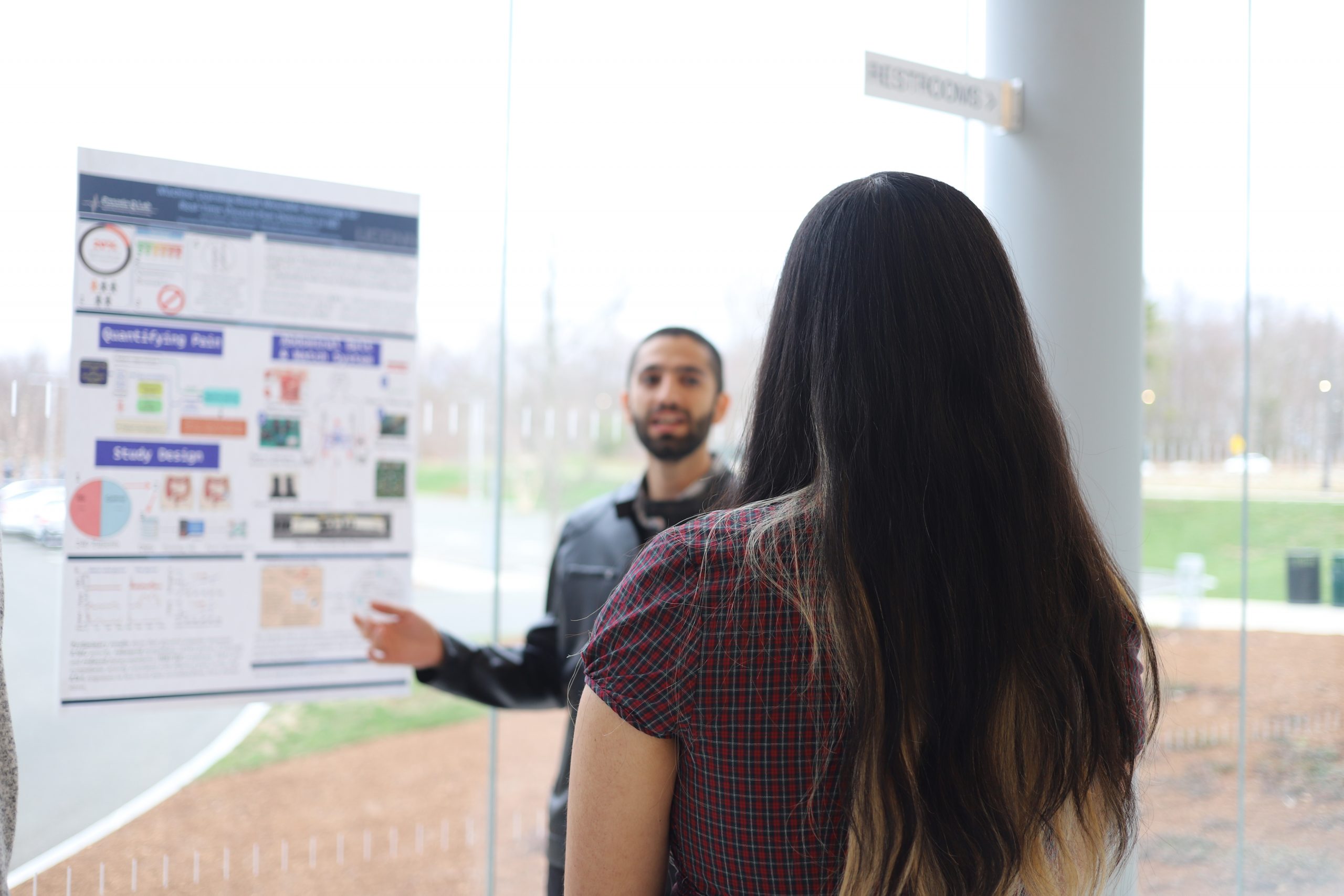
UConn interactive digital media expert John Christensen has brought to life a virtual world with artificially intelligent characters so realistic, engaging, and compassionate, they have accomplished something that, to date, in-person health behavior-change interventions have not.
Christensen, an assistant professor of communication, and collaborators at the University of Southern California (USC) found the video game they created as an intervention for risky alcohol, drug, and sexual behavior is the first to reduce the shame that many young men who have sex with men first experience as stigma and then internalize.
And that’s not all. By reducing the young men’s feelings of shame, the video game helped the players to cut their real-life risky sexual behavior in half, the study shows.
Tapping into emotions
“Other interventions don’t address feelings. They can be very clinical, prescriptive, even cold,” says Christensen, who also is a principal investigator at UConn’s Center for Health, Intervention, and Prevention (CHIP). “We’re doing a good job making players perceive that the characters have feelings about them. We imbued our characters with warmth, a tone of acceptance. They are older brother types who actually say, ‘We care about you.’ We tap into the emotions.”
From 2006 to 2009, there was a 21 percent increase in HIV incidence among those aged 13 to 29, in large part due to a 34 percent increase in young men who have unprotected sex with men. Centers for Disease Control (CDC) data also show that from 2008 to 2011, young men ages 13-24 years who have sex with men had the greatest percentage increase (26 percent) in diagnosed HIV infections.
With those statistics in mind, Christensen and his collaborators developed the video game – called Socially Optimized Learning in Virtual Environments or SOLVE – to deliver an appealing and easily distributed online intervention to men ages 18 to 24 years old who have sex with men. To be included in the study, the young men had to be HIV negative, in one of three high-risk racial populations (African American, Latino, or White), and to have had unprotected sexual intercourse during the past three months.
The study, which was funded by a five-year National Institute of Mental Health (NIMH) grant, was headed by principal investigator Lynn Miller at USC, where Christensen earned his Ph.D.

A previous DVD intervention developed by Christensen and the USC research team used real-life actors and took a similarly accepting approach. Results from that study gave the researchers a strong indication of the role sexual shame might be playing in the sexual risk behavior of young men who have sex with men – a hypothesis they decided to test with the randomized, controlled trial of their video game.
“For young men who have sex with men, there are typically two sources of shame,” Christensen says. “One is discrimination or societal stigma because of their sexual status. Another, if they are making risky choices, is that they intended to be safe but they slipped up. They violated their own personal code of conduct.”
Realistic settings
Characters in the video game counter sexual discrimination or stigma and help the young men see their sexual behavior as acceptable, so long as they are making safe choices.
“We wanted to give young men practice navigating these risky situations in a safe environment first, and to give them the confidence they need to stand up to a partner and communicate what they want in life,” Christensen says. “It’s like giving a driving simulation to a 15-year-old before he ever hits the road.”

SOLVE takes players through a variety of realistic settings, from house parties and night clubs, back to apartments and bedrooms. Players and characters also develop realistic, two-sided relationships. The characters get to know the players and remember them and their choices from level to level, so players learn that the first impressions and choices they make have consequences in terms of their reputations and characters’ future responses to them.
Characters, and future avatar versions of the players themselves, also intervene and deliver encouragement when players are about to make unsafe choices.
The video game trial involved 437 men, who completed at least one level of the game, in the intervention condition, and 484 men in a control condition, randomly assigned. All participants completed surveys self-reporting feelings of shame and protected and unprotected sexual activity for the three months prior to the trial and at three- and six-month follow-ups. When the study was completed, those in the control group were given the option of playing the video game.
As they expected, the researchers found that those having more risky sex at the outset felt more shame. They found that the video game reduced shame in approximately 75 percent of the men who played it and they, in turn, significantly reduced their risky sexual behavior. Unexpectedly, the control group experienced an increase in shame, suggesting that survey questions about risky sexual behavior, without an accompanying accepting intervention, might have played a role.
Some video game players, who had not experienced shame reduction and related decreases in risky behavior by the three-month follow-up, had done so by the six-month follow-up.
“It’s possible the video game elicits negative emotions in some people first, before helping them,” says Christensen.
Positive change over time
The team’s six-month findings will be presented on Dec. 8 at the mHealth Summit in Washington, D.C. Its three-month findings were published in a 2013 special issue of the Journal of the International AIDS Society.
The six-month findings are particularly encouraging, Christensen says, because the positive effects of interventions typically decrease, not increase, over time.
Still, he says, “We expect the positive effects of the video game to trail off over time, but the goal is to make it easy to download a new level of the game and play it again for a quick refresher or stronger reinforcement.”
SOLVE also is a very brief, cost-effective intervention. In-person interventions to reduce HIV stigma, where the participant has to show up at a clinic or research laboratory and interact with a counselor, typically take from six hours to a year, compared to the 30-minute video game.
The research team currently is seeking its next round of funding to expand the number of levels of the game, to make it available to additional target populations, and to further tailor each version for its target audience. Christensen says they also hope researchers will adapt the video game for other realms of health behavior change.
Watch clips from the video game here.



